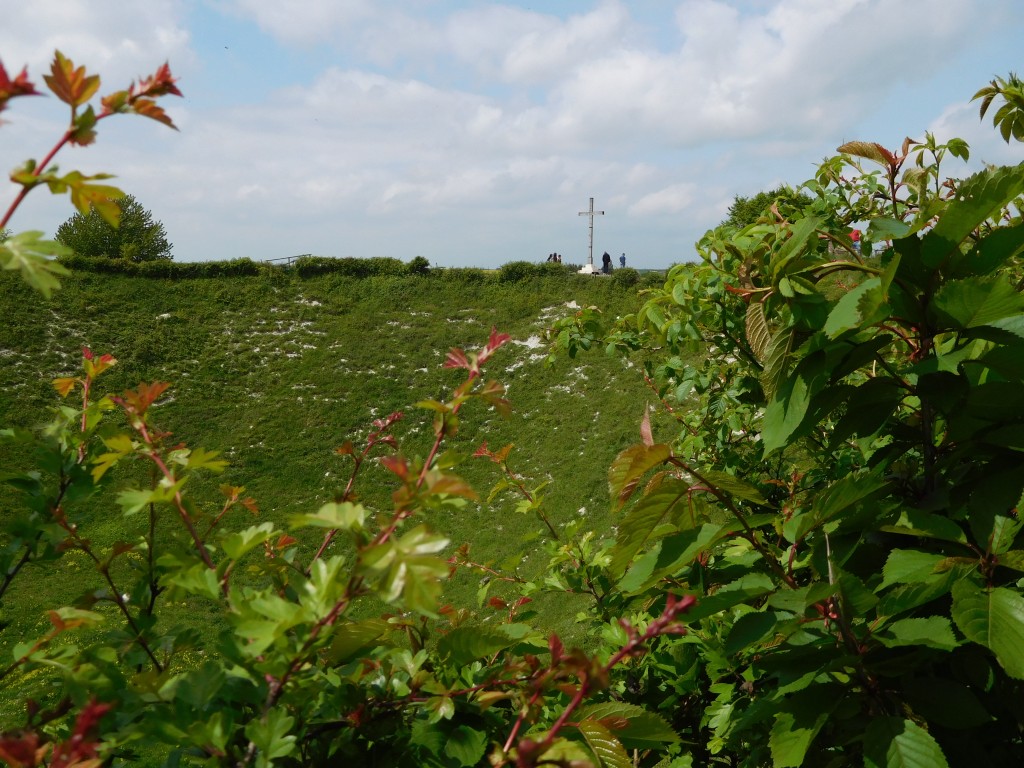There is nothing simple about war. And therefore, there is nothing simple about the way to remember the fallen.
Notre Dame de Lorette is a French Cemetery and the final resting place of 40,000 French troops. It is also the home of the newly constructed circular memorial called The Ring of Remembrance. This is a unique memorial in the sense that it includes the name of 580,000 soldiers of the First World War who lost their in the Nord and in the Pas-de-Calais. These names are listed in alphabetical order – there is no distinction made based on rank or nationality and friends and enemies are buried side by side. This memorial is remarkable. To see the thousands of names of men who came for opposing nations printed alongside each other leaves a profound impact and is incredibly moving. It brings these men together and recognizes the sufferings sustained on both sides. I managed to find one Brouwer among the many names on the memorial, and I’m not sure which country he came from. But it doesn’t matter here. No one is championed as a victor. No one is condemned for their actions. Instead, these 580,000 men are brought together, unified and eternalized in their common cause.
Contrast this with the Faubourg D’Amiens Cemetery that we saw this afternoon in Arras. There are a handful of Hindus, Muslims, and Sikhs buried here, but they are separated from the rest of the fallen because of their race. This shows how the task or remembering the soldiers of the First World War has shifted in the last 100 years. 100 years ago, soldiers were often separated based on rank and race. But on these qualifications don’t matter on The Ring of Remembrance, where everyone is equal no matter what side one fought for.
It is interesting to think that it has taken 100 years to get to this point. It has been a 100 year journey to move past the segregation of “good vs. evil” of the First World War. It will be interesting to see where the next 100 years takes us and if further progression will be made in the reconciliation of the countries who participated in the First World War. The Ring of Remembrance is the first memorial of its kind, however, if the path of commemoration continues in this direction, I, like you, will be waiting to see if more memorials like The Ring of Remembrance are created in the future.
In peace,
Danielle Brouwer
12 May 2015

